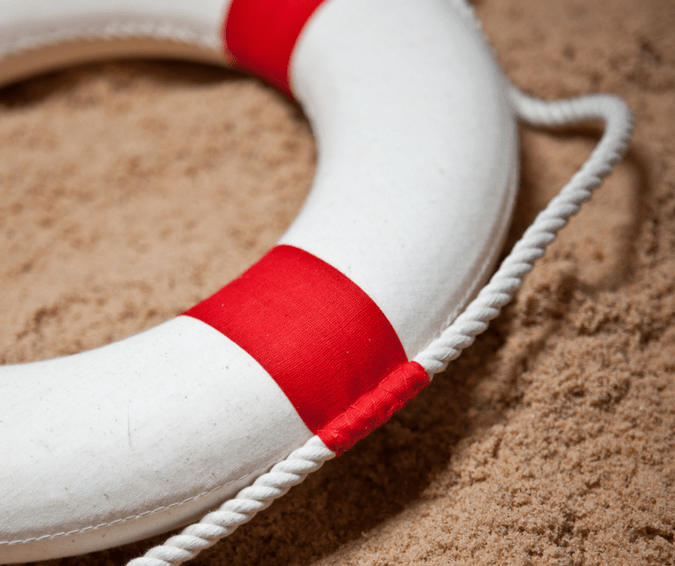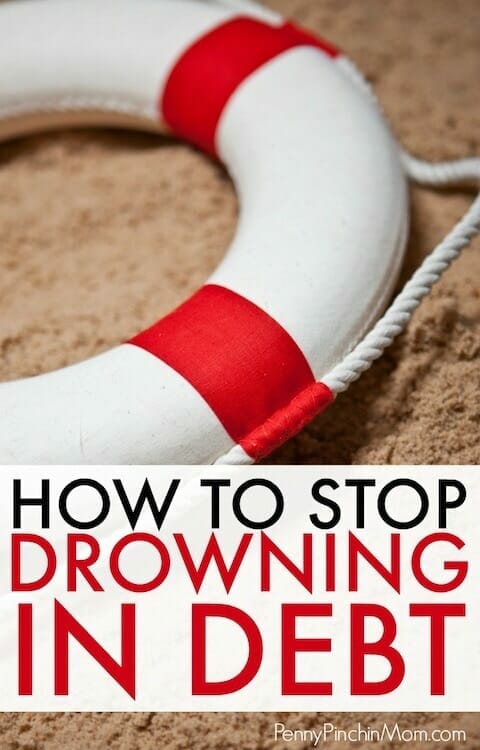Reaching financial freedom is as simple as changing your debt mindset and making small changes in your finances.
Two-in-three Americans say they wouldn’t be able to cover a $500 emergency expense from savings. The average household pays a dollar of every five earned just to make debt payments every month. It may sound shocking, but it is true.
These types of stats make it easy to see how so many fall into hard financial times every year. Thousands of Americans file bankruptcy every year, setting their finances back to zero and destroying their credit.
Tracie’s story of her bankruptcy brought back memories of my own struggle with debt. It was just after the housing bubble burst and rental properties were ruining my financial life rather than making me rich as so many 3 am infomercials had promised.
Like Tracie, I took control of the situation and was able to turn it around by changing my mindset about debt and making a few small changes. These changes are surprisingly small but can mean a big transformation in your financial future. If you feel yourself yelling “Help! I’m in debt and drowning!” there is a solution.
HOW TO STOP DROWNING IN DEBT
Debt Freedom Doesn’t Have to Mean Debt-Free
The first change is just to change your mindset about debt. The average American household owes more than $50,000 in debt, not including the mortgage. That’s nearly as much as the average annual income.
Trying to pay off that debt is a long process, and debt-free seems so far away that it’s easy to give up on your payment plan…or to not start in the first place.
But debt freedom and financial well-being does not have to mean debt-free.
Tackling even your high-interest debt or cutting the total you owe in half can be a huge accomplishment. Owing $50k in debt at an average rate of 14% means $7,000 a year in money lost to interest. Cutting your debt in half means saving $3,500 a year or nearly $300 a month in extra cash.
Also see: How much is too much credit card debt
Changing your debt mindset, understanding that debt-free isn’t the goal but just debt freedom, means you can make smaller goals. Setting a goal of paying down your debt by just $1,800 this year is much more achievable than paying it all off. When you’ve accomplished your goal or even exceeded it, you’ll be re-energized to set higher goals, and your debt payoff will only accelerate.
After changing your debt mindset, you can start to make small changes for big effects on your debt.
Saving Money the Easy Way
Paying off your debt starts with a budget. I know, nobody likes to budget, and most budgets are dropped faster than an angry porcupine, but you have to know where your money is going.
Don’t look at your budget as the beginning of long months of sacrifice, think of it as a guide.
Write out everything on which you spend money. This means little things as well as the monthly bills. You might have to put this together over a month, jotting down every little purchase, to get an accurate view. You’d be surprised how much those small purchases cost you when you finally start tracking them.
Once you’ve got a budget, turn it upside-down!
When most people budget to save money, they start with their income and then take out expenses to see what’s left over for saving on the bottom. If they have a little left for savings, there’s no motivation to cut needless expenses.
Instead, take out the money you want to save each month first, then list your expenses. If there isn’t enough to cover your expenses, then you’ll have to start cutting spending without sacrificing saving.
Let’s face it though; there isn’t always much to cut in the budget. People are living paycheck-to-paycheck, and it’s not always clear what expenses can be dropped.
That’s why I love spending challenges.
Pick one expense from your budget, something you have control over and can cut, like eating out, soda, or that avocado toast that I didn’t even know was a thing until Facebook told me.
Then go just one month, cutting that expense completely. Setting a one-month goal will instantly put a light at the end of the tunnel and make it easier to quit. Try a couple of months with different expenses. You’ll save hundreds a month and will be surprised how little you miss some of the expenses that were once must-haves.
What a Big Difference a Little Extra Can Make
Saving where you can turn into huge savings on interest as you pay off your debt. Making regular pay means you still owe over $2,400 at the end of three years after paying back almost the full amount of the loan!
Add just $50 a month to the payment though, and you’ll have almost paid it off in three years. The total cost of the loan comes to $6,425 versus $7,618 which is how much you would end up paying on the regular payments.
That’s a savings of $1,193 just from an extra $50 a month!
How to Pay off Debt, Two Strategies to Save Money and Motivate
So you’ve got an extra $50 to pay down debt, where should you start?
Faced with half a dozen loans and tens of thousands in debt can be intimidating. How do you prioritize and get the most from your debt payoff?
There are two strategies you can use to pay down your debt; one will save you thousands in interest, while the other is hugely motivating.
The Debt Avalanche method is probably the most popular of the two and saves the most money.
- Write down all your loans in order of interest rate with the highest rates first.
- Make regular payments on all your debt but pick the loan at the top of the list to make extra payments each month.
- As loans drop from your list, put any extra money to the next highest on the list.
By paying more to the highest-rate debt, you save money on total interest costs. Even though the credit card balance might only be a few thousand dollars, it could be costing you just as much interest as the mortgage, so paying it off makes financial sense.
The Debt Snowball method is my favorite, especially for people that need a little extra motivation.
- Write down all your loans in order of the smallest amount owed first.
- Make regular payments on all debt, but put any extra money towards paying off the loan at the top of the list.
- As loans drop from your list, focus on the next highest debt.
You’ll see debts drop off the list faster with the snowball method compared to the avalanche method. It might cost a little extra in interest since you’re not focusing your extra money on the high-rate loans, but it’s great to watch those bills fall off your budget each month.
Of course, you can mix and match a little if you like. Try the Debt Avalanche method, but split your extra payment in two, with half going to your highest-rate loan and the other half to pay off your smallest debt.
What not to do when you are overwhelmed by debt
Just like there are things you should do when you find yourself up to your neck in debt, there are things you should also not do. They may seem like a solution at the moment but can lead to much bigger problems in the future.
Don’t skip payments
If you are struggling to make ends meet, you may feel that the best option is to just not make your monthly payment on debts. Don’t do this.
Instead, call and talk to the debtor. They can sometimes offer an extension or allow you to skip one payment – without repercussions.
Don’t take out a new loan
As tempting as it may be, don’t take out a loan. There may be a new credit card or check from a lending agency that arrives in the mail. If you could just use those, that would help, wouldn’t it?
Wrong.
The interest rates on some of these loans and cards can be astronomical and using them to try to consolidate or pay off your debt could cost you more in interest over the long term. In addition, the short-term interest rates will go up and if you do not pay off the amount you transferred, they may go back to the first day of transfer and chart you 20% or more interest, compounded over time.
Think it will just go away on its own
As much as we all wish there were a magic wand to wave to instantly cast a life preserver to save us from the drowning debt, that won’t happen. You can’t ignore your financial problems and hope they will go away.
Face them head on and be ready – and willing – to make sacrifices, and you’ll get that paid down before you know it.
What to Do with Your New Financial Freedom
Pretty soon, with just a few small financial changes, you could be looking at a new financial reality. You’ll be saving money on interest, paying down your debt, and will have to decide what to do with the growing cash in your bank account.
It’s OK to spend a little. You work hard for your money and deserve to enjoy it. Just don’t fall back into some of those old spending habits that led to debt and thousands in interest payments. Start making your money work for you with a simple investing plan according to your age and financial goals.
Budgeting and saving money doesn’t have to be a New Year’s resolution you make every year, but keep for only a few weeks. Making small changes in your debt mindset and budget can mean big, long-term benefits to your financial well-being.
Joseph Hogue worked as an equity analyst and an economist before realizing being rich is no substitute for being happy. He now runs five websites in the personal finance and crowdfunding niche, makes more money than he ever did at a 9-to-5 job and loves building his work from home business.

